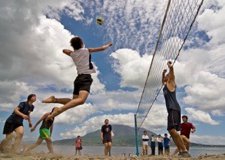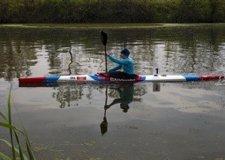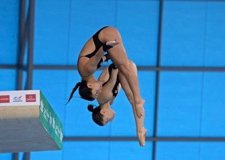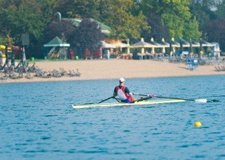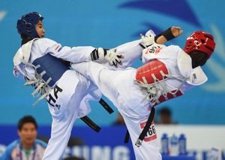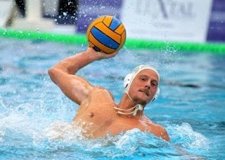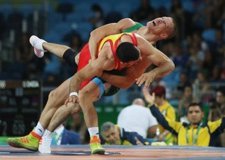Summer Olympic Sports
The Summer Olympics Games is one of the biggest international sporting events in which a different city around the world hosts the event every four years with the next Summer Olympics taking place in Tokyo, Japan in 2020. Organised by the International Olympic Committee, the Summer Olympics showcases the best and most talented athletes around the world, awarding gold medals for first place, silver medals for second and bronze for third.
Below you will find all of the different sports offered at the Summer Olympic Games with some of the more popularly watched games being Gymnastics, Swimming, Diving, Athletics, Basketball, Tennis and Football (Soccer).
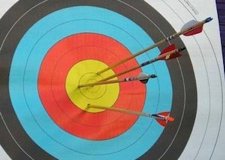
Archery
Archery involves the use of a bow to fire arrows at a target board from a set distance. In the Olympics, 70 metres is considered the “standard” range. Archery is one of the oldest sports still played today with a history dating back as far as 1200 BC. The sport made its first appearance at the Olympics in 1900, where Hubert Van Innis of Belgium – the most successful archer in the history of the games – picked up two golds and a silver medal.
Athletics
Athletics has been a constant fixture in the Olympics since the games first began. Contestants have performed in various events during this time, although modern athletics typically involves sprint, hurdle, relay and walking races, as well as jumping competitions (high jump, pole vault, triple jump, long jump) throwing contests (discus throw, javelin throw, hammer throw), and decathlons/heptathlons. These combine a variety of different track and field events.
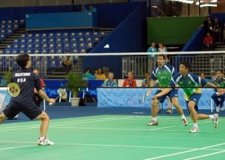
Badminton
Badminton is a court-based sport played between two (known as a singles game) or four (known as a doubles game) people. Participants use a racquet to hit a shuttlecock (a projectile made from feathers or plastic with a cork base) across a net at the centre of the court. To score points, a contestant must strike the shuttlecock and ensure it lands in the opponent’s half of the court. Badminton has been played at the Olympics since 1992.

Basketball
Basketball is an indoor court sport played between two teams – ordinarily with five players on each side. Points are scored by “shooting” an inflated ball through a hoop with a net – and the exact number of points acquired depends on the position from which the ball is thrown. Basketball has been a regular presence at the Olympic games since 1936.
Beach Volleyball
Beach Volleyball is a sand-based court sport whereby two teams (with two players each) strike a ball above a high-placed net. The aim is to hit the ball in the right places so it lands in the opposing side’s half – and this is how points are scored. Beach Volleyball has featured regularly at the Olympics since 1996, with men, women, and mixed gender tournaments being contested.
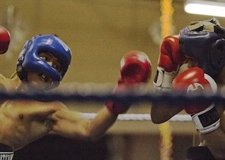
Boxing
Boxing is a combat sport contested between two people within the confines of an indoor square-shaped ring. Both participants wear protective gloves and strike one another to score points for a number of “rounds” (pre-determined chunks of time, usually a few minutes). A participant can also succeed by physically knocking the opponent out. Boxing has a long and illustrious history, and can be dated back to the Olympic events held in Ancient Greece.
Canoe Sprint
Canoe Sprints involves a race between competitors who are seated inside canoe boats. Each participant uses a single-blade paddle to steer their canoe and power it forwards in an attempt to reach the finish line in the quickest possible time. Canoe Sprint races have been involved in the Olympics ever since 1936, and are regularly competed over distances of 200, 500 and 1000 metres.

Cycling BMX
BMX (bicycle motorcross) Cycling involves racing bicycles on off-road tracks which often consist of rocky terrain that requires participants to lift their bikes off the ground in a “jumping” motion and tackle tight corners at high speeds. BMX racing was introduced into the Olympics as recently as 2008.

Cycling Mountain Bike
Mountain Biking or Mountain Cycling involves racing bicycles over bumpy terrain at high altitudes, tight angles and steep inclines. Participants ride specially designed mountain bikes (which were developed and popularised in the 1970’s) when competing in a race. Mountain biking made its first appearance at the Olympics in 1996, and has remained a part of the games ever since.
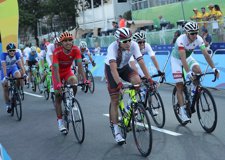
Cycling Road
Road cycling is the most common and popular form of bicycle racing in the world, and involves participants riding bicycles on paved roads, attempting to reach the finish line in the fastest possible time. Road cycling involves both individual and team events, and has been a regular part of the Olympics since the games first began.

Cycling Track
Track cycling involves racing bicycles on specially designed tracks – which are usually built on steep, circular banks. Participants ride bikes, which have been manufactured specifically for use on these types of racetracks, and compete in two main types of races: sprint (which involves reaching the finish line as fast as possible) and endurance (which involves competing at high speeds for long periods of time).
Diving
Diving athletes propel themselves from a springboard from height into a pool below, performing acrobatics whilst they are airborne. Divers are scored based on their ability to execute a particular dive with full control, with each judge marking the dive out of ten. Professional divers must work on their athleticism, flexibility and strength in order to compete at the highest levels.
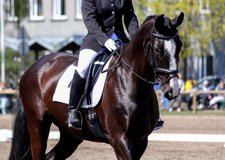
Equestrian Dressage
Equestrian/Dressage is the sport of riding a horse and showcasing the ability to control the animal whilst doing so. In order to score as many points as possible, competitors must demonstrate that they are “in tune” with the horse and show that the animal can follow instructions, perform jumps and display athleticism on command. The less physical effort the rider appears to put into handling the horse, the more points they are likely to score.

Equestrian Jumping
Equestrian Jumping (or “Show Jumping”) is a sport that involves riding a horse and encouraging the animal to leap over fences (set at predetermined heights) in front of a panel of judges. These judges then mark the rider on the smoothness and control exhibited during each jump. Equestrian Jumping has featured regularly at the Olympics since 1912, although it made its first appearance in 1900.
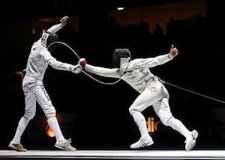
Fencing
Fencing is one of the oldest Olympic sports, having featured at the games right from the very beginning. The sport involves two competitors dressed in protective masks and clothing who fight one another with swords. Rules and styles of fencing can vary, and are often split into three main categories – Foil, Epee, and Sabre.

Football
Football is a team sport played on an outdoor field or indoor court, most commonly with 11 players on each side at a professional/competitive level. Players can only use their feet to control the spherical game ball (with the exception of the goalkeeper) and the aim of the game is to place the ball in the opposition’s net, which is known as a “goal”. Football has been played at the Olympic games every year except for 1896 and 1932.

Golf
Golf has only featured at the Olympic games on a sporadic basis, although it remains one of the more popular competitive sports worldwide. Golf involves competitors using a club to strike a ball into a hole on a course. The fewer “strokes” it takes for a participant to land the ball in the hole, the better they score. Courses can vary in shape and size, although grass is the most common form of terrain.
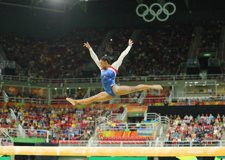
Gymnastics Artistic
Artistic Gymnastics involves athletes conducting a performance across a set of gym apparatus, including vaults, floor mats, still rings and balance beams. Certain events are reserved for particular genders (e.g. balance beams is a women’s only event). Each participant attempts to score points (awarded by a panel of judges) by executing an individual move with control, strength, and skill. Artistic gymnastics has been performed at the Olympics since 1896.
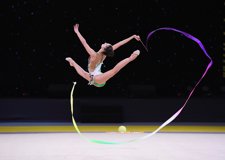
Gymnastics Rhythmic
Rhythmic Gymnastics is a sport that involves the use of one or two items of gym apparatus to produce particular athletic moves and shapes. Ropes, balls, hoops, ribbons and clubs are all examples of apparatus utilised in a Rhythmic Gymnastics performance, with participants scored by a panel of judges. This sport is most popular with female athletes, and was introduced into the Olympic games back in 1984.

Handball
Handball is a court-based indoor team sport whereby two sides of seven players aim to throw the ball in the opposition team’s net to score a goal. The team who triumphs is the one who scores the most goals over a predetermined period of time (ordinarily sixty minutes split into two halves). Handball made its first appearance at the Olympics in 1936, but didn’t return until 1972. Since the seventies, it has featured regularly at the games.
Hockey
Field Hockey is a team sport that can be played on courts both indoors and outdoors, with each side consisting of eleven players. Every match is played with a small plastic ball which players are required to move and strike using sticks. The aim is to shoot this ball into the opposition’s net, which results in a goal. The team who scores the most goals during the match will triumph. Field Hockey first appeared at the Olympics in 1908 before taking a break until 1920. Since then, it has featured in every edition of the games.
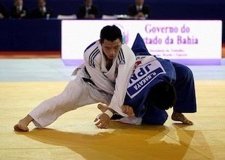
Judo
Judo is a combat sport that originated in Japan, and has become one of the more well-known varieties of modern martial arts around the world. Every Judo match involves two participants attempting to defeat one another using takedowns, throws, locks, chokes and pins. Striking is forbidden by the rules. Judo has been present at the Olympics since 1964.
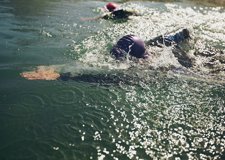
Marathon Swimming
Marathon Swimming is a sport that involves athletes swimming in open water for a long period of time over lengthy distances in a test of endurance. The Marathon Swimming event at the Olympics is 10 kilometres. The aim is to finish the race as quickly as possible, and participants are often forced to deal with variable weather conditions and strong tides during competitions.
Modern Pentathlon
Modern Pentathlon is a sport that was introduced into the Olympics in 1912, originally created to simulate the experience of a 19th century soldier caught behind enemy lines. Modern Pentathlon is a combination event and involves numerous stages, including fencing fights, freestyle swimming races, show jumping events, pistol shooting, and cross-country races (competed over a length of 3200 metres).
Rowing
Rowing is a sport that involves the use of an oar/paddle to propel a moving boat through water at the highest possible speed in order to win a race. Rowing is often competed as an individual and team sport, and has featured at the Olympic games in a number of different formats since 1900. Different races involve different types of boats designed to house varying numbers of participants.

Rugby
Rugby is a team game split into two separate styles: Rugby League and Rugby Union. Both disciplines function on the same basic principle: which is to carry the ball across a field and place it down at the far end. This is known as “Scoring a Try”. However, Rugby League and Rugby Union have different points systems, rules, and numbers of players participating. Rugby Union has featured sporadically at the Olympics, most recently in 2016.

Sailing
Sailing (also known as Yachting) is a sport which involves controlling a boat and racing across different types of waters. Most commonly, competitive sailing adopts a “fleet racing” format, which involves two sailboats racing against one another over a course, which is assembled by the organisers. Sailing has been present at the Olympics since 1904, and has been competed in by both men and women since the very beginning of the games.
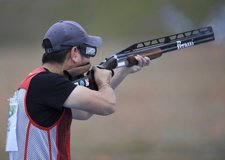
Shooting
Shooting involves the use of various types of firearms to hit a target. Every participant will aim for the highest points areas marked out on the target board in an attempt to accumulate enough points to win the competition. Shooting sports have been performed at most Olympic games since they first began, and include air pistol, air rifle, double trap, pistol, rapid fire pistol, rifle, skeet and trap shooting events.
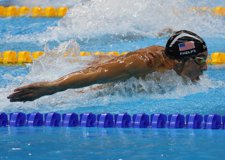
Swimming
Swimming is a sport which involves racing through water by adopting a certain type of technique. There are numerous swimming races contested at the Olympic games, including backstroke, butterfly, breaststroke and freestyle (where a participant is free to utilise a variety of techniques). Swimming is contested on an individual and team basis in the form relays, with events held at every Olympic games since the competition first began.
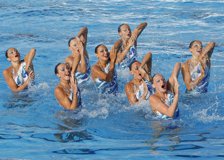
Synchronised Swimming
Synchronised Swimming is a combined sport that incorporates elements of swimming, gymnastics and dance. Synchronised Swimming competitors conduct coordinated performances alongside music, creating patterns and shapes at specific intervals. Teams are awarded points by a panel of judges who score sides for grace, timing and artistic ability. Synchronised Swimming has been held at the Olympics since 1984.
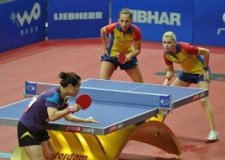
Table Tennis
Table Tennis is a sport where players use a small bat to hit a tiny ball across table that has a net placed at the centre. Points are scored when the opposing player is unable to return the ball back across the table – either missing the ball completely or hitting the ball into the net. Players are permitted to let the ball bounce once in their half before hitting it back. Table Tennis has featured as an Olympic sport since 1988.
Taekwondo
Taekwondo is a combat sport that prioritises a variety of kicking techniques, with each participant aiming to defeat one another over the course of several rounds. Every contestant wears protective gear from head to toe, and modern Taekwondo suits have built-in electronic systems that register scored points. Taekwondo is considered a self-defense art and was popularised in Korea. It has featured as an Olympic sport since the turn of the millennium.
Tennis
Tennis is a court-based sport competed between two (singles) or four (doubles) people. Each participant is in possession of a wired racket, which they use to hit a ball across the court – with a net separating each half. The aim of the game is to strike the ball in a tactical way so the opponent cannot return the ball. Tennis has experienced a patchy Olympic history, but has featured consistently since 1984.
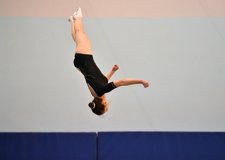
Trampoline
Trampolining is a competitive sport in which participants bounce on a trampoline and perform a series of acrobatic moves whilst airborne. A panel of judges then scores each contestant based on their technique and timing as they perform tucks, rolls, and a variety of stylised jumps. Trampoline events have been involved in the Olympic games since 2000, with men and women participating.
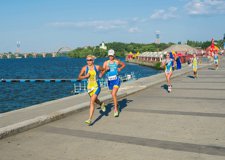
Triathlon
Triathlons are multi-stage events that incorporate three separate sports into one large-scale competition. Ordinarily, a Triathlon will consist of a swimming stage, cycling stage, and running stage. The aim is to complete the entire competition in the fastest possible time. Triathlon events were introduced to the Olympic games in 2000 and have remained a permanent fixture ever since.
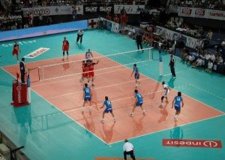
Volleyball
Volleyball is a court-based sport competed between two teams of six players, with a tall net separating both sides. Players must strike a ball above the net into the opposition team’s half, and must attempt to avoid the ball landing on the ground in their side of the court. Specific rules can change depending on the type of game played, but certain players may not be permitted to hit the ball on two consecutive occasions. Volleyball has been played at every Olympic games since 1964.
Water Polo
Water Polo is a water sport contested between two teams, with a net housed at each end of the pool. The aim is to throw the ball into the opposition’s net as many times as possible in order to score a goal. The side with the most goals after four quarters (which are 5-8 minutes in length, depending on the type/skill level of the game) wins. Water Polo has been played at the Olympics since 1900.

Weightlifting
Weightlifting is an athletic sport that tests a participant’s strength and endurance by requiring them to lift extremely heavy items using their body. A strong, muscular physique from head to toe is needed to compete at the highest levels. Numerous events have been held in Weightlifting competitions at the Olympics since 1896, from Flyweight events right the way up to Super Heavyweight.
Wrestling Freestyle
Freestyle Wrestling is one of two variants of wrestling performed at the Olympic games (the other being Greco-Roman Wrestling). Freestyle Wrestling typically takes place between two opponents who attempt to throw one another to the ground and pin them down in order to triumph. With the exception of the 1900 games, Freestyle Wrestling has been ever-present at the Olympics.
Wrestling Greco-Roman
Greco-Roman Wrestling is one of two variants of wrestling performed at the Olympic games (the other being Freestyle Wrestling), and has been held consistently since 1908. Unlike Freestyle Wrestling, Greco-Roman Wrestling does not permit participants to hold or grapple opponents from the waist down, meaning throws are often a popular move. Arm drags, bear hugs, and headlocks are also utilised on a frequent basis.

